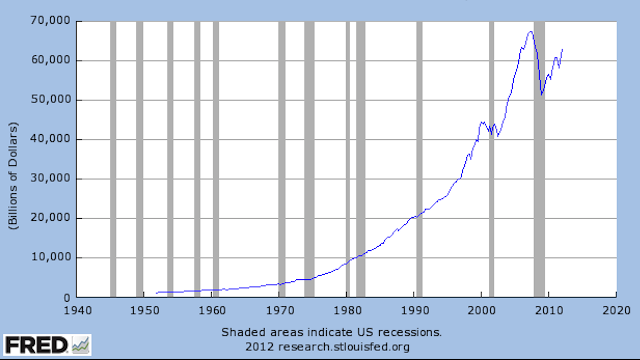A Sobering Look At The Future of Fuels

By Rick Popely
Someday, personal transportation may be in automated vehicles that drive themselves and run on electricity or an alternative fuel. But for the foreseeable future, most Americans will rely on oil and their personal driving skills to get from Point A to Point B.
That was the overriding message from the keynote panel discussion on the future of transportation at the 60th Annual Chicago Booth Management Conference, held May 11 at the Hyatt Regency Hotel in Chicago.
Robert Topel, Isidore Brown and Gladys J. Brown Distinguished Service Professor in Urban and Labor Economics, moderated the wide-ranging discussion that covered the development of alternative fuels, the prospect of reducing greenhouse gas emissions, the influence of world economic growth on energy consumption, and the government’s role in energy policy.
“We’re going to use oil and gas for quite a while—decades,” said Bill Reinert, national manager of the advanced technology group for Toyota Motor Sales, USA, Inc. in Torrance, California, and part of the team that developed the Toyota Prius hybrid.
Despite rising hopes for the potential of battery-powered electric vehicles, Reinert called that “a long, hard road” because the size, weight, and cost of the batteries are obstacles to affordability and widespread acceptance.
Michael K. Wirth, executive vice president for downstream and chemicals at San Ramon, California–based Chevron Corp., said that the world eventually will transition off hydrocarbon fuels, but not anytime soon. He predicted that liquid fuels—primarily gasoline and diesel—will power 70 to 80 percent of the vehicles 20 years from now because, “it beats everything else by a long way, and that’s just thermodynamics and physics.”
Wirth noted that alternatives such as electric vehicles (EV) must provide the same utility as a conventional gas-powered car and be as affordable, but today’s EV is expensive and often serves as the third or fourth car in a family fleet.
“It works great for those who can afford it, but the reality is that most people aren’t there,” he said.
That doesn’t mean the foreseeable future will be without change or challenges, the panelists told an audience of 600 at the Hyatt and hundreds more viewers watching via simulcast from 39 countries.
Twenty years from now, Wirth said, global demand for energy will be 40 percent higher than it is today, because 2 billion people in developing nations “are on their way to the emerging middle class, and they want the same things you and I have.”
To meet that demand, governments around the world need to adopt policies that promote exploration for new energy sources, and encourage development of technologies that increase the efficiencies of the vehicles that use them, Wirth said.
“What doesn’t work well is government picking winners in technology. We can’t have people prescribe solutions,” he said, adding that renewable energy sources such as solar and wind will not be able to fill growing energy demands. Renewables now account for only 1 percent of the energy mix, and Wirth predicted that they will represent only 3 percent of energy supplies in 20 years.
Growing energy use abroad also will make it difficult to cut greenhouse gas emissions from transportation in half by 2050, a goal set by the Obama administration and international leaders.
Growth in car ownership in countries such as India and China means that whatever progress is made in the United States will be more than offset by sheer numbers abroad, Reinert said. Wirth added, “goals are often based on good intentions but not grounded in any realistic assessment.”
Both panelists agreed that the government could speed development of alternative fuels by funding research over a broader time horizon than the current year-to-year appropriations. Reinert said it was “extraordinarily frustrating” for the auto industry that the US national laboratories are funded by Congress on an annual basis, a process that means research projects may run out of money before they are completed. “If we could set that up as ongoing collaborative research, it would be so much better,” he said. Carbon-free hydrogen fuel is one potential alternative that the government should support with research money, he added.
Wirth added that instead of backing one or two potential solutions, the government should invest in a “portfolio of technologies” that includes research into fuels, materials, and delivery systems.
Moderator Topel prodded the panel to explore the prospect of Jetsons-style flying cars and vehicles that drive themselves, but Reinert dismissed such notions as unrealistic.
“As long as there’s a three-ton pickup with a drunk behind the wheel, there’s going to be liability issues with an automated car,” he said.
Instead of a quantum leap to the Jetsons, Reinert predicted incremental improvements to the internal combustion engine, and gains in fuel-stretching hybrid technology. Today’s gas engines are around 17 percent efficient, meaning that is how much of the energy consumed winds up driving the wheels, and for hybrids, such as the Prius, the efficiency is 34 percent. Reinert said over the next decade efficiency should increase by two to two-and-a-half times that. “We’re taking the weight out, with advanced and hybrid steels that make our cars safer and lighter.”
Image courtesy of RGtimeline/Shutterstock.com.





